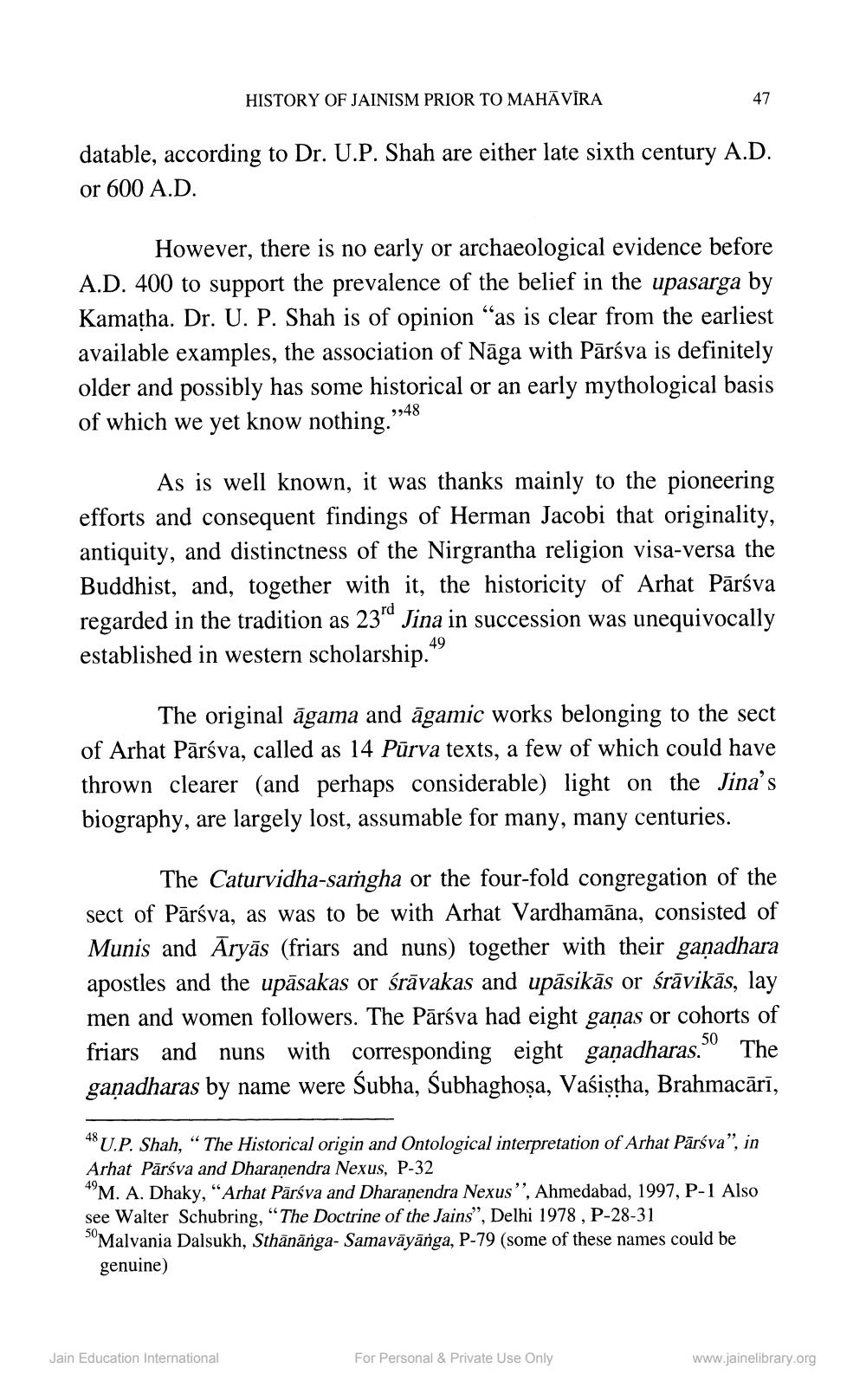________________
HISTORY OF JAINISM PRIOR TO MAHĀVĪRA
datable, according to Dr. U.P. Shah are either late sixth century A.D. or 600 A.D.
However, there is no early or archaeological evidence before A.D. 400 to support the prevalence of the belief in the upasarga by Kamatha. Dr. U. P. Shah is of opinion “as is clear from the earliest available examples, the association of Nāga with Pārśva is definitely older and possibly has some historical or an early mythological basis of which we yet know nothing."48
As is well known, it was thanks mainly to the pioneering efforts and consequent findings of Herman Jacobi that originality, antiquity, and distinctness of the Nirgrantha religion visa-versa the Buddhist, and, together with it, the historicity of Arhat Pārsva regarded in the tradition as 23" Jina in succession was unequivocally established in western scholarship.“
49
The original āgama and āgamic works belonging to the sect of Arhat Pārsva, called as 14 Pūrva texts, a few of which could have thrown clearer (and perhaps considerable) light on the Jina's biography, are largely lost, assumable for many, many centuries.
The Caturvidha-samgha or the four-fold congregation of the sect of Pārśva, as was to be with Arhat Vardhamāna, consisted of Munis and Aryās (friars and nuns) together with their ganadhara apostles and the upāsakas or śrāvakas and upāsikās or śrāvikās, lay men and women followers. The Pārśva had eight gaņas or cohorts of friars and nuns with corresponding eight gañadharas.“0 The ganadharas by name were Subha, Subhaghoșa, Vaśiştha, Brahmacārī,
48 U.P. Shah, “The Historical origin and Ontological interpretation of Arhat Pārsva”, in Arhat Pārsva and Dharaṇendra Nexus, P-32 49M. A. Dhaky, “Arhat Pārśva and Dharanendra Nexus”, Ahmedabad, 1997, P-1 Also see Walter Schubring, “The Doctrine of the Jains", Delhi 1978, P-28-31 Malvania Dalsukh, Sthänānga-Samavāyānga, P-79 (some of these names could be genuine)
Jain Education International
For Personal & Private Use Only
www.jainelibrary.org




